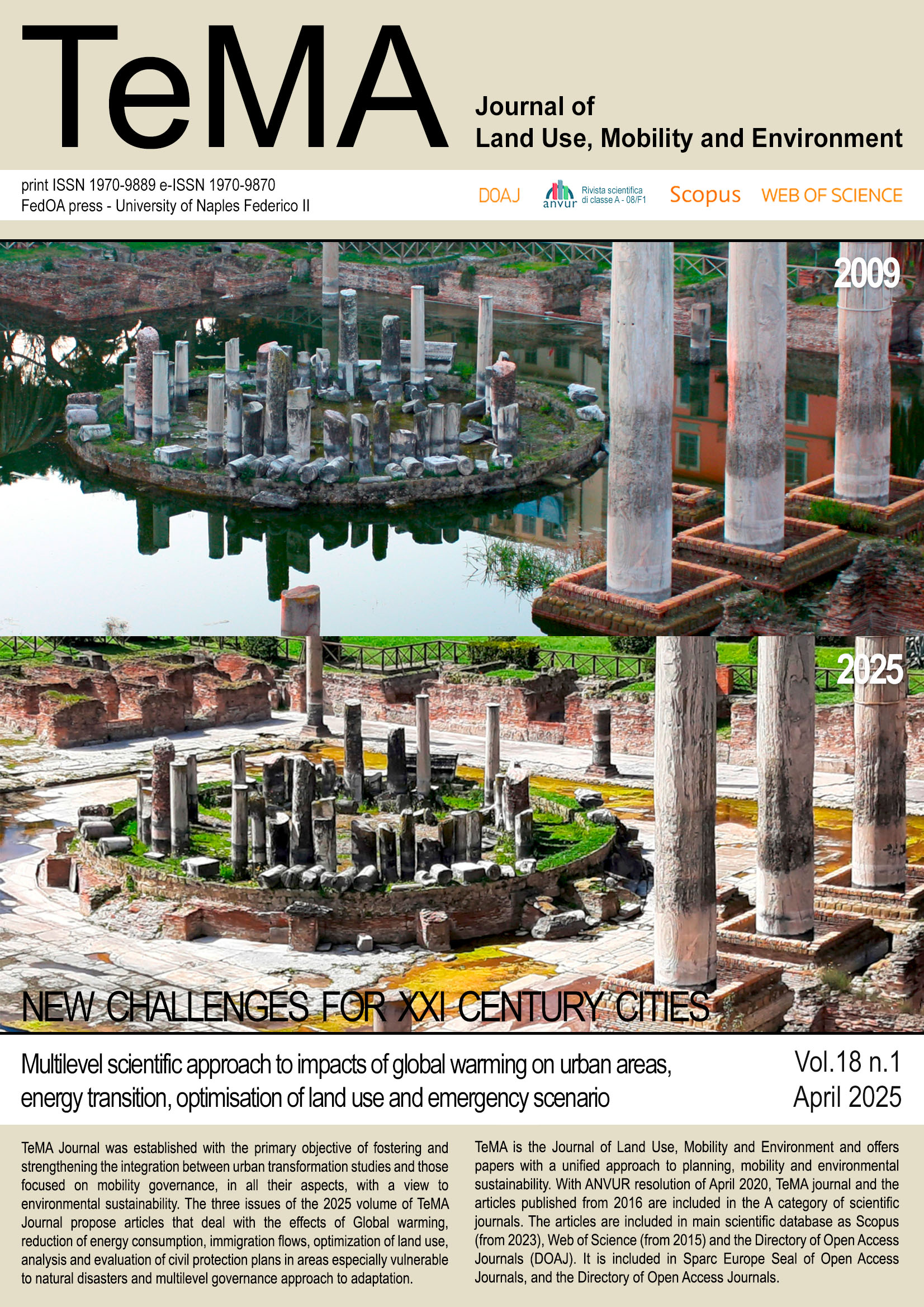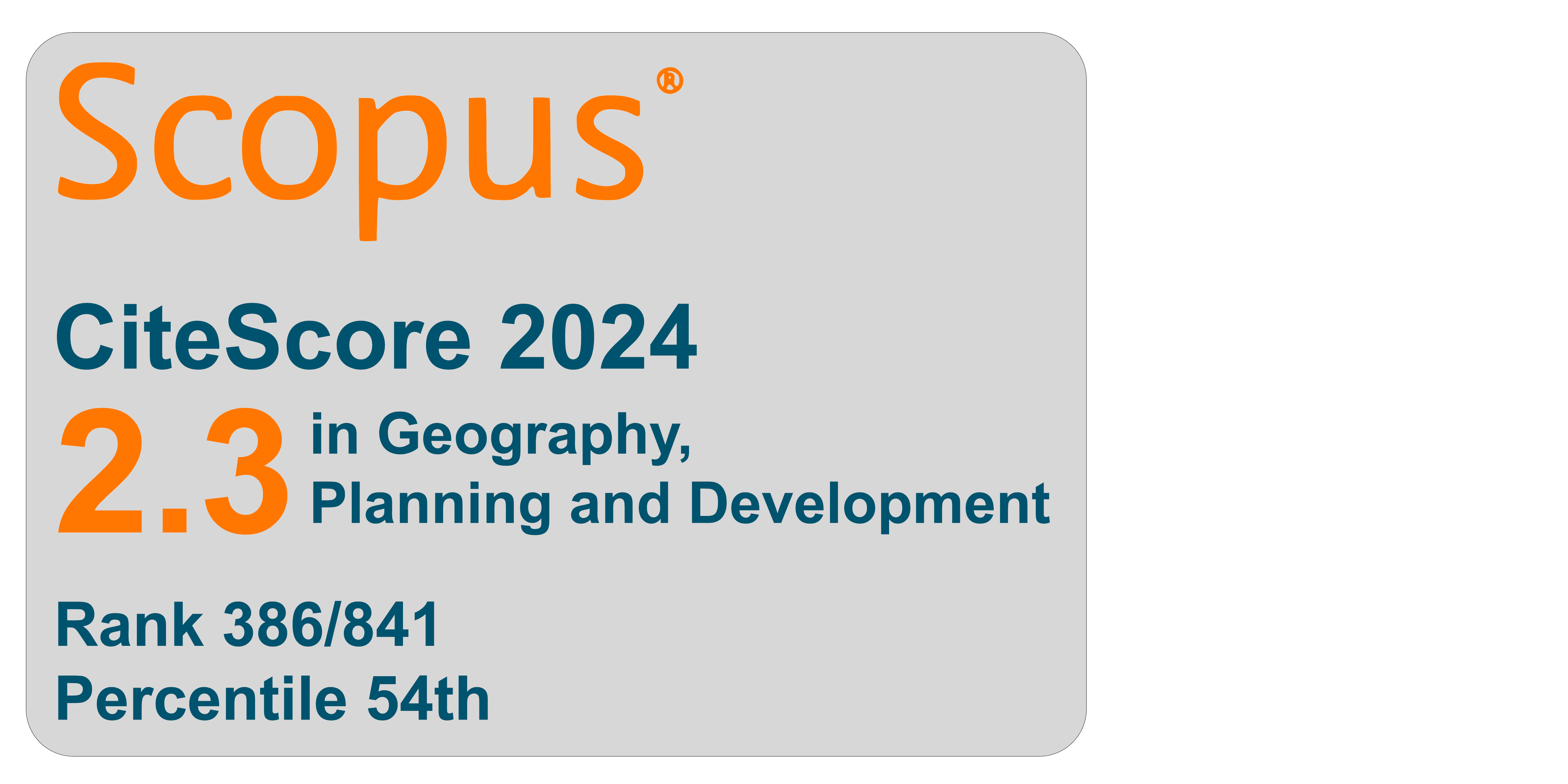Digitalization in urban planning: a framework to realize smart cities
DOI:
https://doi.org/10.6093/1970-9870/11626Keywords:
Smart cities, Sustainable, Urban strategies, Tecnologies, DigitalizationAbstract
Starting from the relationship between urban planning and mobility management, TeMA has gradually expanded the view of the covered topics, always remaining in the groove of rigorous scientific in-depth analysis. This section of the Journal, Review Notes, is the expression of continuously updating emerging topics concerning relationships between urban planning, mobility and environment, through a collection of short scientific papers written by young researchers. The Review Notes are made of four parts. Each section examines a specific aspect of the broader information storage within the main interests of TeMA Journal. In particular, the Urban strategies, programmers and tools section presents presents the different strategies and tools that guide the digitalization of urban planning. The contribution explores how innovation is increasingly important in the current definition of urban planning processes. The policies and programs needed to support the transition towards smart cities, more efficient, sustainable and citizen-oriented, are outlined.The analysis illustrates the key strategies and main programs implemented by the European Union and other International Organizations to promote the digital transformation of cities to make them "smart" and sustainable. Concrete examples are presented of cities that have successfully implemented these strategies, addressing challenges such as climate change and resource management, demonstrating how digitalization can create more liveable and resilient urban spaces.
Downloads
References
EC (2023). D06.02 In-depth report of organisational and cultural interoperability issues and practices in place within public administrations related to the four use cases. Retrieved from: https://interoperable-europe.ec.europa.eu/sites/default/files/inline-files/In-depth%20report%20on%20organisational%20and%20cultural%20interoperability%20issues%20and%20practices%20in%20place%20within%20public%20administrations_vFINAL.pdf
EC (2024a). Smart Cities and Communities. Retrieved from: https://digital-strategy.ec.europa.eu/en/policies/smart-cities-and-communities
EC (2024b). EU missions – 100 climate-neutral and smart cities. European Commission: Directorate-General for Research and Innovation. Publications Office of the European Union. https://data.europa.eu/doi/10.2777/85010
EC (2025). Smart cities. Retrieved from: https://commission.europa.eu/eu-regional-and-urban-development/topics/cities-and-urban-development/city-initiatives/smart-cities_en
EIF4SCC (2021). Proposal for a European Interoperability Framework for Smart Cities and Communities. Publications Office of the European Union. https://data.europa.eu/doi/10.2799/816559
National Smart Cities Strategy Factsheet Portugal (2022). National Smart Cities Strategy. Retrieved from: https://reform-support.ec.europa.eu/publications-0/national-smart-cities-strategy-factsheet-portugal_en
Rolling Plan for ICT standardisation (2024). Smart and sustainable cities and communities (RP2024). Retrieved from: https://interoperable-europe.ec.europa.eu/collection/rolling-plan-ict-standardisation/smart-and-sustainable-cities-and-communities-rp2024
Smart City Wien (2019). Smart City Wien Rahmenstrategie 2019–2050. Die Wiener Strategie für eine nachhaltige Entwicklung. ISBN 978-3-903003-52-1 Retrieved from: https://smartcity.wien.gv.at/wp-content/uploads/sites/3/2019/10/Smart-City-Wien-Rahmenstrategie-2019-2050.pdf
U4SSC (2024a). Copenhagen, Denmark. Case study of the U4SSC Guiding principles for artificial intelligence in cities. ISBN 978-92-61-38131-8 Retrieved from: https://u4ssc.itu.int/publications/
U4SSC (2024b). Hong Kong, China. Case study of the U4SSC Guiding principles for artificial intelligence in cities. ISBN 978-92-61-38111-0 Retrieved from: https://u4ssc.itu.int/publications/
Downloads
Published
How to Cite
Issue
Section
License
Copyright (c) 2025 TeMA - Journal of Land Use, Mobility and Environment

This work is licensed under a Creative Commons Attribution-NonCommercial 4.0 International License.



